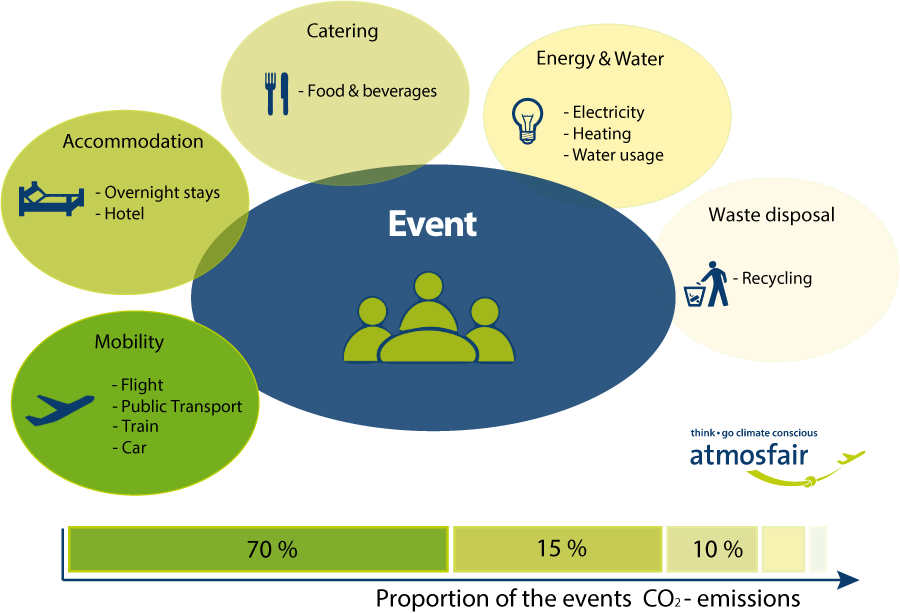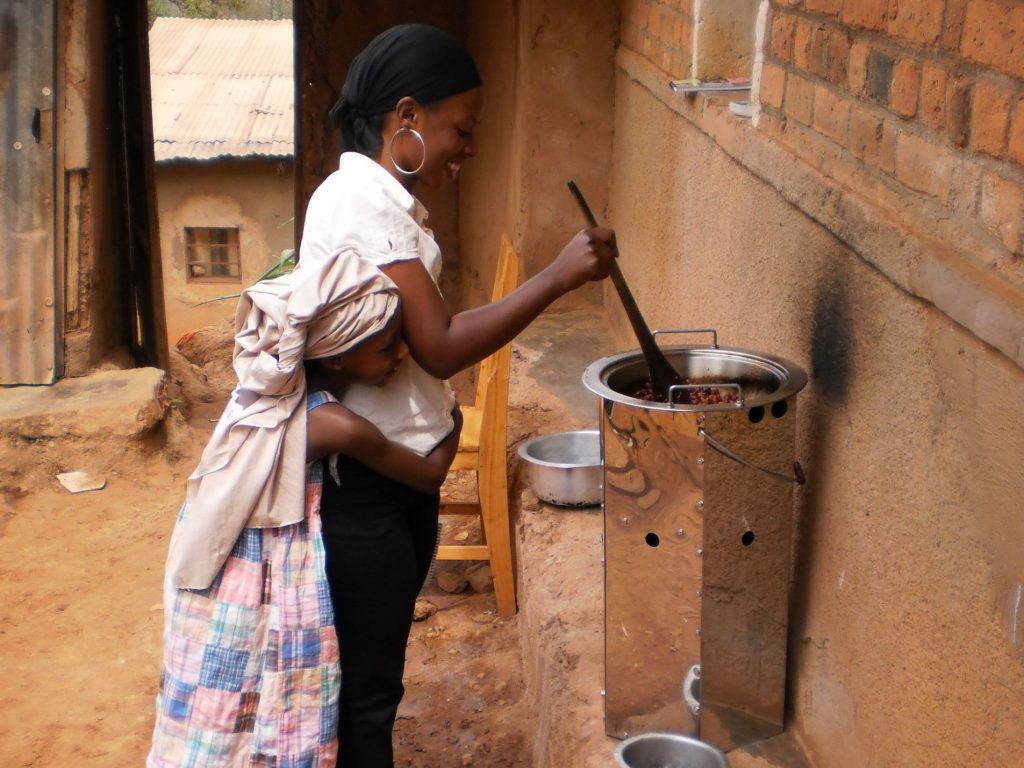Trade fairs, annual general meetings, conferences, festivals, pop concerts – there are many reasons for people to gather. Unfortunately, they affect not only the social climate. Every event produces atmosphere-warming greenhouse gas emissions, through travel to and from the event location, electricity and heating, catering and waste disposal, and other activities. Some of these emissions can be avoided, while others currently cannot.
Emissions sources at events and their typical distribution:
- Travel to and from location: 70 %
- Accommodation: 15 %
- Catering: 10 %
- Energy consumption, infrastructure and premises: 5 %

Greening your event, step by step
- step – avoid: Plan ahead to avoid carbon emissions. When choosing an event location, ask if they use renewable electricity. Motivate your guests to choose more climate-friendly transportation by providing information on public transport or rebates for train tickets . Read more tips for reducing emissions in the Guidelines for the Environmentally Sound Organisation of Events by the German Federal Ministry for the Environment and the Federal Environmental Agency.
- step – calculate: Not all event-related emissions can be avoided. To calculate your event’s carbon footprint, consider the location as well as variable parameters. Based on your input, atmosfair can calculate the climate impact of your event. Are you planning a large-scale event and looking for help with reducing and calculating emissions? Talk to us!
- step – offset: The final step on your way to a climate-friendly event is offsetting with atmosfair. You will receive a logo for your „Climate-friendly event“, which you can leverage in communications. Offsetting contributions are tax-deductible in Germany
Further reading: best practice cases
Calculate and offset event-related carbon emissions
When you have considered all possibilities to reduce your event’s carbon footprint, you can calculate remaining emissions and offset them with atmosfair. You will receive a certificate for your contribution from us, which you can share with event participants. Need help planning and communicating your climate-friendly event? Talk to us!
To calculate the carbon emissions resulting from your event, please fill out the form below and send it to events@atmosfair.de. For smaller events without flights, you can also use the standard values in the table below to estimate the emissions and offset directly. Your benefit: Get your offsetting certificate immediately and hassle-free. You can also find two sample calculations for typical events below: for a family event with 40 people and a conference with 150 participants from around Europe.

Calculation methodology
atmosfair calculates carbon emissions from events based on the VDR standards for business travel, a comprehensive method for calculating event-related emissions. The method was jointly developed by atmosfair and VDR, the German trade association of travel managers.
The calculation is normally based on statistics as well as variables – including data for event locations and their energy consumption (using either records for your event location or mean data for building types collected by atmosfair ) as well as duration, number of attendees, overnight stays, catering, travel to and from the event location as well as on site, and the transportation of goods.
Sounds complicated? Don’t worry! We will help you figure out which data are available and which path suits you best. We will ask you for all necessary data in an easy to fill in questionnaire – and do the calculation for you. For users who offset their events with atmosfair, the emissions calculation is free of charge. If you do not wish to offset with atmosfair, we offer the calculation for a reasonable hourly rate. Contact us for a quote!
Need help planning and communicating your climate-friendly event? Talk to us!
Carbon mitigation projects
To offset the carbon emissions associated with your event, you can support one of more of our carbon mitigation projects. They not only avoid CO₂, emissions, but also contribute to sustainable development through technology transfer and reduced poverty. We develop and operate our own mitigation projects, which allows maximum control and transparency as well as lower costs by cutting the middle men.



 Share
Share Tweet
Tweet